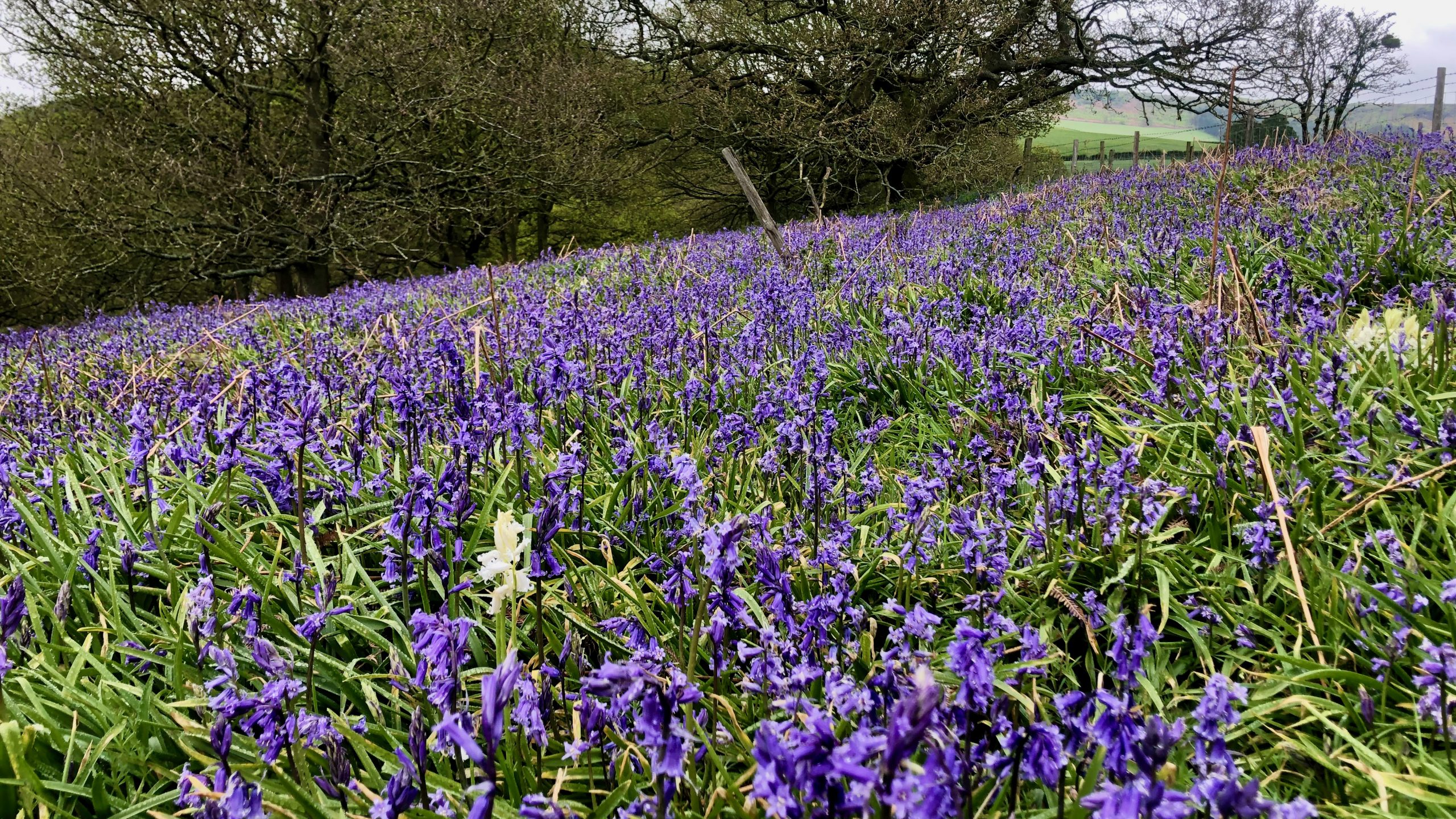May is an enchanting month, and one of the most exhilarating things about it is the appearance of bluebells in Newton Wood. These stunning blue flowers are a breathtaking sight and attract photographers from all over Teesside.
While the majority of bluebells are blue, this clump of white ones regularly bloom. These may be “albino” bluebells lacking the blue pigment which are incredibly scarce, with only one occurring in every 10,000 flowers of native white English bluebells1Trust, Woodland. 2020. Woodland Trust <https://www.woodlandtrust.org.uk/blog/2020/04/are-bluebells-poisonous-and-more-bluebell-facts/> [accessed 7 May 2023]. However, the Spanish bluebell also has white versions that are commonly sold in garden centres and can form hybrids with English bluebells.
Even though they may look similar at first glance, there are notable differences between the English and Spanish bluebells. The Spanish bluebell stem grows upright, whereas the English bluebell droops to one side. Additionally, English bluebells have a sweet fragrance, while the Spanish variety is scentless. The Spanish bluebell is also a lighter shade of blue and has broader leaves.
It is important to note that all parts of the bluebell plant contain toxic glycosides that can be harmful to humans, dogs, horses, and cattle. Eating any part of the plant can cause severe stomach upset, and consuming large amounts can be fatal. The bulbs of bluebells can be mistaken for spring onions or garlic, and the sap is known to cause dermatitis and skin irritation. As a result, all varieties of bluebells are poisonous.
- 1Trust, Woodland. 2020. Woodland Trust <https://www.woodlandtrust.org.uk/blog/2020/04/are-bluebells-poisonous-and-more-bluebell-facts/> [accessed 7 May 2023]

Leave a Reply